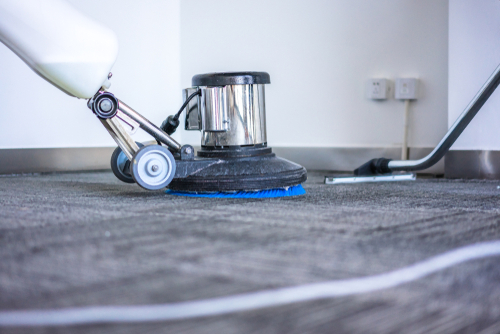
Office Carpet Care: How to Maintain a Professional Environment
November 9, 2023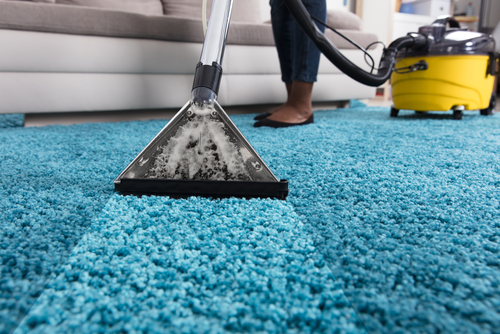
Health Risks of Untreated Water-Damaged Carpets
December 26, 2023Preserving the Color and Texture of Your Carpets
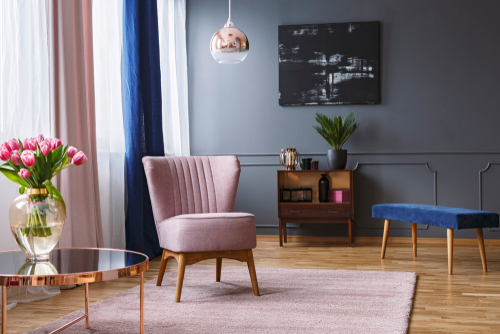
Preserving the Color and Texture of Your Carpets. Carpets serve as the unsung heroes of our living spaces, setting a tone of warmth and sophistication.
Over time, the daily wear and tear can erode their splendor, leading to a dull and lifeless appearance.
It is crucial, then, to understand and implement measures that keep carpets as vibrant and plush as the day they were installed.
This extensive article gives practical advice on preserving your carpet’s original color and texture. Read on – Preserving the Color and Texture of Your Carpets:
Understanding Carpet Wear and Tear
The enemies of your carpet’s vitality are many: ultraviolet light, spills, traffic, and even the very air we breathe. These factors can collaborate to fade colors and fray textures.
Not all carpets are created equal. The resilience of your carpet against wear is largely determined by the quality of the material used. Wool, for instance, is renowned for its durability and color retention, whereas polyester may offer less resilience in high-traffic areas.
Our everyday activities, whether it’s the kids playing or just walking across the room, put a strain on our carpets. This is most evident in ‘lanes’ where traffic is heaviest, which can show signs of wear much sooner than less traveled parts of the carpet.
Routine Maintenance for Color and Texture Preservation
Regular Vacuuming Techniques
Optimal vacuum settings are paramount for different types of carpets. For instance, a Berber carpet requires a different vacuum setting compared to a frieze carpet to prevent snags or pilling.
Dirt acts like thousands of tiny blades, cutting and damaging fibers as they are pressed and walked upon. Regular vacuuming removes these particles, preserving the carpet’s color and preventing the fibers from becoming matted and worn.
Immediate Attention to Spills and Stains
The key to effective spot cleaning is promptness and precision. Blotting, not rubbing, and the correct choice of cleaning agent can mean the difference between a fleeting spill and a stubborn stain.
Always test any cleaning solution on an inconspicuous area first to ensure it doesn’t discolor or damage the fibers. This small step can prevent a much larger issue.
Proper Cleaning Techniques to Avoid Damage
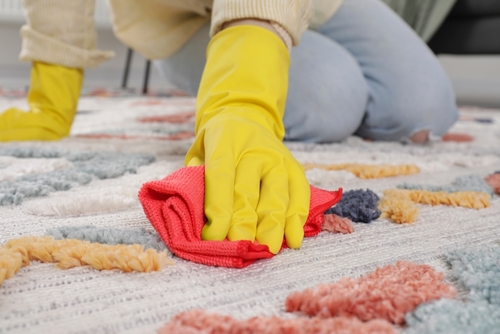
Selecting the Right Carpet Cleaning Products
1. Understanding pH Levels and Their Effects on Carpets
The pH level of your cleaning solutions can affect the color and integrity of your carpet. Knowing whether to use an acidic or alkaline solution is key.
2. Natural vs. Chemical Cleaners
Natural cleaners are often gentler on carpets but may lack the power of their chemical counterparts. It’s a balance between preserving the carpet and achieving a deep clean.
The Do’s and Don’ts of Deep Cleaning Carpets
1. Steam Cleaning and Shampooing Methods
Deep cleaning methods must be chosen based on the carpet type and the level of soiling. Steam cleaning can refresh fibers, while shampooing may be better for tougher stains.
2. Risks of Over-Wetting Carpets
Too much moisture during cleaning can seep into the pad, causing damage and encouraging mold growth. Using just enough water to clean and ensure thorough drying is essential.
Protecting Carpets from Direct Sunlight and UV Rays
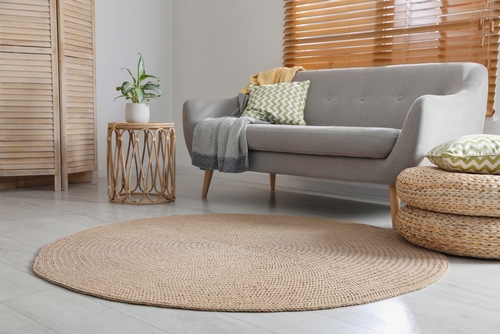
Blinds, shades, and UV films can significantly decrease the amount of sunlight carpets are exposed to, preserving their color and preventing premature aging.
In addition to window treatments, arranging furniture and carpet layouts to minimize exposure can help maintain carpet integrity.
Various products can be applied to carpets to reduce UV damage, helping to extend the life and appearance of the carpet fibers.
Furniture and Foot Traffic Management
Heavy furniture can compress carpet fibers, leading to permanent indentations. Using coasters under furniture legs can help distribute the weight and prevent damage.
Strategically placed rugs and mats can add to your décor and protect carpets in high-traffic areas.
Periodic rearrangement of furniture can prevent the formation of pressure marks and wear patterns, keeping the carpet looking fresh and even.
The Importance of Professional Carpet Care
While routine maintenance is something you can do regularly, professional cleaners have the equipment and expertise to perform a deeper and more thorough clean.
Professionals often employ methods and solutions not available to the general public, which can significantly extend the life of your carpet.
When hiring a professional, verify that they use safe treatments for the color and type of carpet you have in your home or office.
Home Remedies vs. Store-Bought Solutions
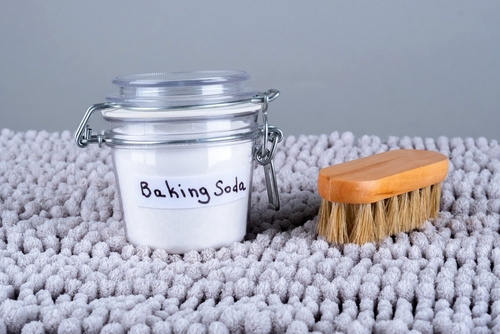
Home remedies can be a simple and natural way to maintain your carpet, but they may not always provide the deep cleaning needed for more demanding jobs.
Sometimes, the cleaning power you need can only be found in commercial products designed specifically for carpets.
Various recipes exist for making your carpet cleaners, many of which use common household items like vinegar, baking soda, and essential oils.
FAQ
How can I tell if my carpet is colorfast before using a new cleaning product?
You can perform a simple spot test to determine if your carpet is colorfast. Apply a small amount of the cleaning solution to a hidden area of the carpet, such as a corner or under furniture.
Blot the area with a white cloth and check for color transfer. If there’s no color on the cloth after a few minutes, the carpet is likely colorfast, and the product can be used safely.
How often should I deep clean my carpet, and does it differ by type?
It’s generally recommended to clean your carpet deep at least once a year. However, if your carpet is light-colored or in a high-traffic area, you may need to clean it more frequently.
For instance, thick pile carpets can hide dirt and require less frequent deep cleaning than low pile carpets, which show soiling more readily.
Are there any specific vacuum attachments or techniques to help preserve my carpet’s texture?
Yes, using a vacuum with a brush roll can lift the carpet fibers, helping to maintain the texture. For loop pile carpets, it’s advisable to use a suction-only vacuum to prevent snags and pilling.
Additionally, using a crevice tool to clean baseboards and furniture can prevent the carpet from becoming matted in these hard-to-reach places.
Can I use baking soda and vinegar to clean my carpet, and are they effective?
Baking soda and vinegar can be used to clean carpets and are especially effective in removing odors and light stains.
Baking soda can be sprinkled on the carpet to absorb odors and then vacuumed away. For stains, vinegar can be diluted with water and applied to the stain before blotting.
However, they may not be as effective on deeply set stains or discoloration, where professional products or services may be necessary.
What should I do if my carpet has a persistent unpleasant odor even after cleaning?
Persistent odors can be due to various issues, including mold, mildew, or pet accidents that have penetrated the carpet fibers or padding.
If regular cleaning doesn’t remove the smell, you may need specialized deodorizing treatment or hire a professional carpet cleaner to assess and treat the odor source.
Ensuring proper ventilation and using air purifiers can also help prevent and remove lingering odors.
Preserving the Color and Texture of Your Carpets – Conclusion
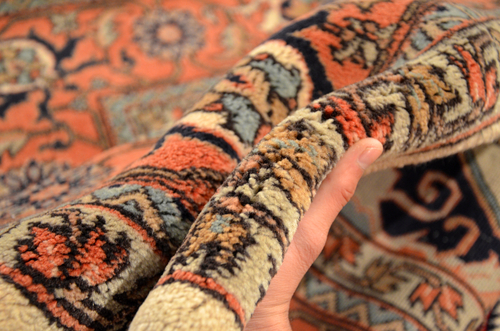
The grandeur of a pristine carpet is undeniable, offering both visual and tactile satisfaction.
By integrating the strategies discussed, your carpets can remain a testament to your home’s elegance and comfort for years.
Consistency in maintenance and an understanding of the nuances of carpet care are your best tools in this endeavor.
Are you seeking professional and reliable carpet cleaning services in Singapore? Contact us today!

